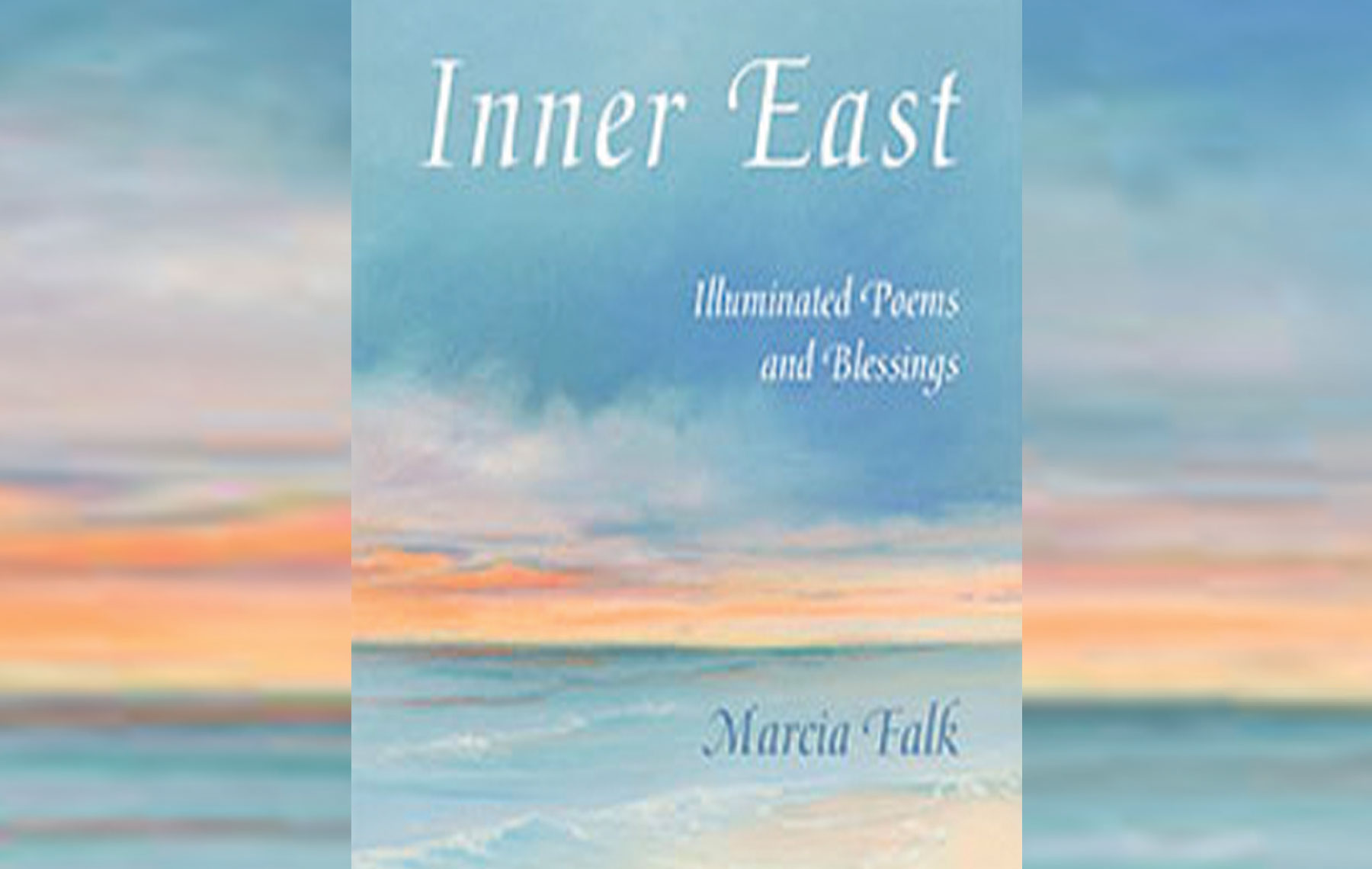
Marcia Falk is best known as a modern maker of richly innovative Jewish prayers as collected in “The Book of Blessings,” which was described by poet Adrienne Rich as the meeting of “the scholar’s mind and the poet’s soul.” But Falk’s work is not confined to a single category — she is a translator of Hebrew and Yiddish texts (including the biblical Song of Songs), a teacher of English and Hebrew literature, and a revered figure in Jewish feminist circles. Falk herself characterizes “The Book of Blessings” as an “inclusive, nonpatriarchal” alternative to the traditional siddur.
That’s why her latest book, “Inner East: Illuminated Poems and Blessings” (Oak and Acorn Books), is marked by its publisher in three different categories: Poetry, Judaism and Art. Indeed, it is nothing less than a tour de force that showcases Falk’s mastery of Jewish texts and traditions, her gifts as a poet and her lifelong passion for the visual arts.
“As a child, I loved to draw pictures and write stories and poems, and I imagined one day writing and illustrating my own books,” she explains in a preface to “Inner East.” “But as I grew older, the exigencies of life led me to choose one of these creative paths — writing — professionally, while maintaining the other, visual art, as a private passion.”
She devoted 13 years to “The Book of Blessings.” On its publication in 1996, which happened to coincide with her 50th birthday, she took what she accurately describes as a leap of faith. “At that watershed moment,” Falk writes, “I decided to return to painting with all the dedication and commitment I had devoted to writing.” And now she has gathered the fruits of her new endeavor in “Inner East.”
“Like all poetry, Falk’s verses invite us to read them aloud, but I found myself wanting to gaze at the artwork while someone else did the reading.”
Of course, image-making is a fraught subject in Jewish religious tradition, but Falk insists that it can be “a quintessentially Jewish aesthetic genre.” Her inspiration was the decorative plaque called a mizrach, which is hung on the eastern wall of synagogues and Jewish homes to identify the direction that one should face while praying. Mindful of these associations, Falk once again reinvents an artifact of Jewish ritual observance as a tool for discovery and fulfillment: “My mizrachs are meant to serve as guides toward an inner east — indeed, to the heart — providing a focus for meditation, contemplation, and prayerful silence.”
The book consists of 36 “two-page offerings,” each one consisting of a painting on one page and a poem or blessing on the facing page. Falk’s imagery is drawn from nature — “landscapes, seascapes, skyscapes, and still lifes,” most of them rendered in oil pastel on museum board — and her words are always written in English but sometimes also in Hebrew. The very first such offering, titled “Awakening,” shows us a tree rising against rolling hills and a cloud-washed blue sky, and a poem of 12 short lines.
High wind
and a blackbird
push the sky across the hills.
The windows shake. You pull
yourself out of the blankets,
a flash strikes the eastern walls
of houses.
Morning —
the city a cup full
of light, a bright
flask of wind
to rise to.
The first section of “Inner East” consists of artwork and English poems. The second section is bilingual, Hebrew and English, and the text is rendered as a series of blessings — a genre in itself, and one on which Falk’s reputation has long rested. Her latest set of blessings can be used for both aesthetic and utilitarian purposes: “Morning Blessing,” “Blessing Before Sleep,” “Blessing Before the Meal,” “Blessing After the Meal,” and so on. Her blessings echo but never copy the traditional blessings and prayers in which Falk finds her inspiration and aspiration.
We see the egalitarianism that is one of Falk’s core values in both the Hebrew and English versions of the blessings. For example, the “Blessing Before the Meal” includes the familiar Hebrew phrase that means “bread from the earth” — Lechem min ha’aretz — but replaces “the King of the Universe” with the pointedly genderless phrase “source of life.” Similarly, the “Blessing for the Child” is offered in different versions for a girl and for a boy, but only the word forms are gendered in Hebrew; both blessings omit the traditional biblical names and exhort the child to find her or his own path in life:
Be who you are,
and may you be blessed
in all that you are.
Like all poetry, Falk’s verses invite us to read them aloud, but I found myself wanting to gaze at the artwork while someone else did the reading. In that way, we can fully enter both the words and the images in the kind of meditative experience that Falk surely intended. And I am confident that I am not the only appreciative reader who will use “Inner East” in precisely that way.






















 More news and opinions than at a Shabbat dinner, right in your inbox.
More news and opinions than at a Shabbat dinner, right in your inbox.